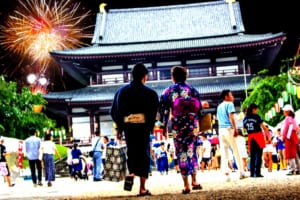10 Best Things to Do in Okayama
Okayama Travel Guide: What to Do in Okayama Now
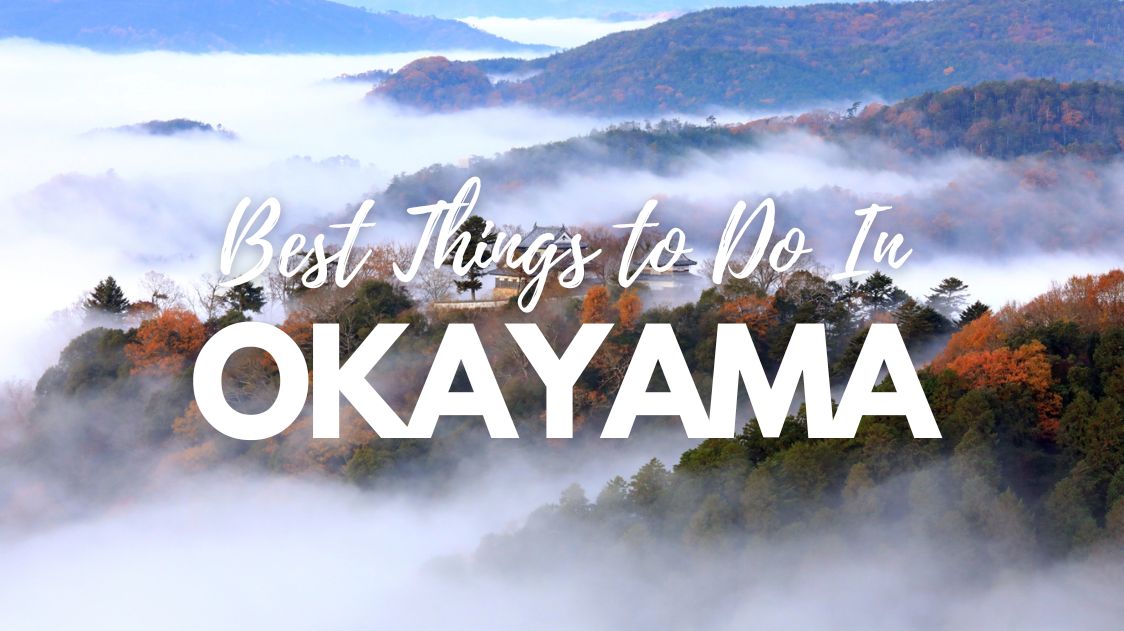
Often overlooked in favor of its more famous neighbors, Okayama Prefecture is a treasure trove of unique experiences waiting to be discovered. From the perfectly manicured Korakuen Garden to the nostalgic streets of Kurashiki, Okayama is a delightful blend of tradition and modernity.
It’s the birthplace of the sweetest peaches and the home of Momotaro, the legendary Peach Boy. So, if you’re looking for the best things to do in Okayama, prepare to be pleasantly surprised. This isn’t just another prefecture; it’s Okayama, where every corner holds a story. This is our list of the 10 best things to do in Okayama.
With this Chugoku Region Bucket List, let’s also check out the surrounding tourist attractions: Best Things to Do in Chugoku
1. Stroll Within a Tranquil Oasis in the Heart of the City at Okayama Korakuen Garden
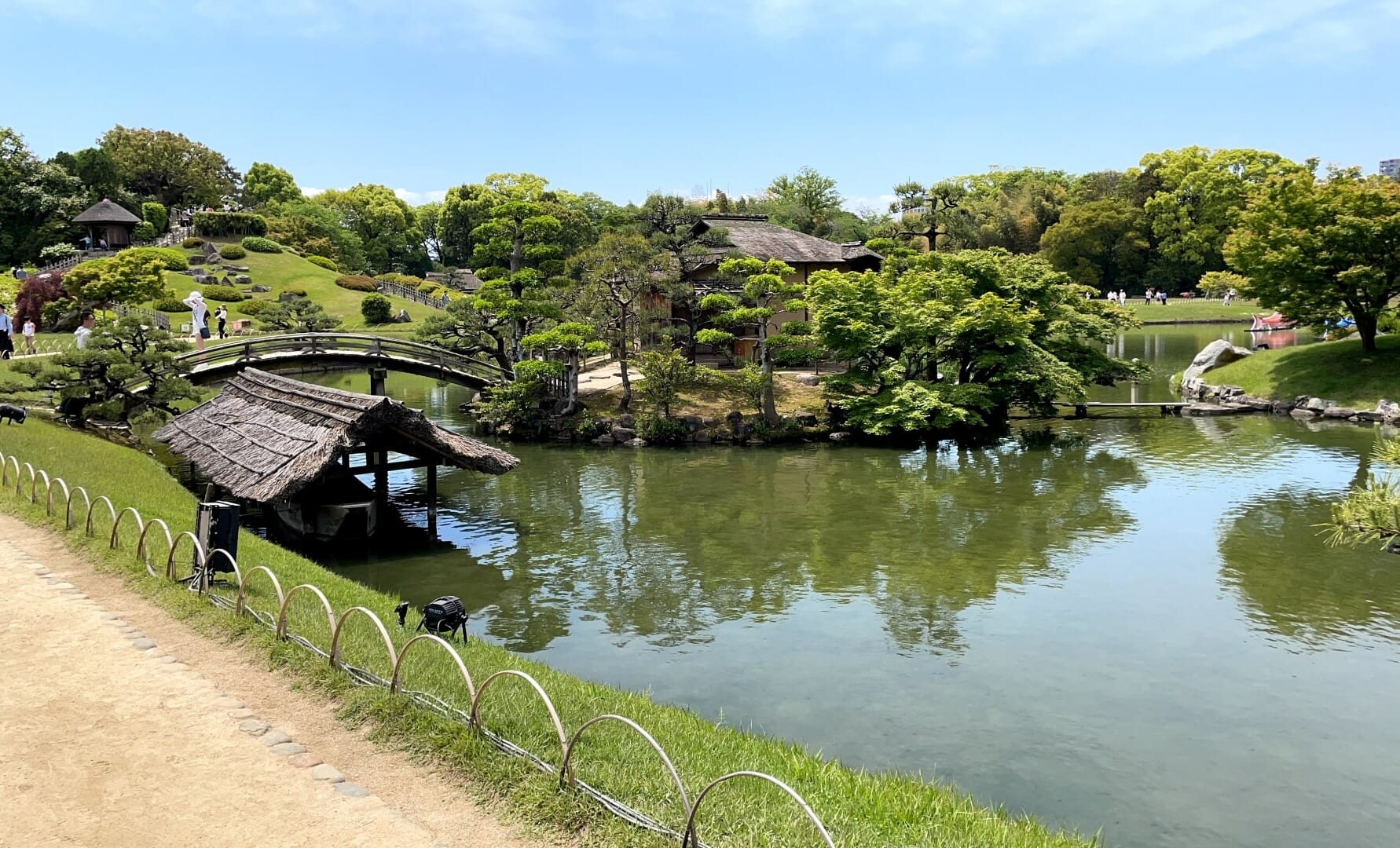
The garden is a masterpiece of Japanese gardening art, featuring a large pond, tea houses, streams, and a variety of plants that create a picturesque scene in every season. Visitors can enjoy a leisurely stroll along the winding paths, taking in the views of the Okayama Castle in the distance. The garden also hosts traditional tea ceremonies and other cultural events throughout the year, offering a glimpse into Japan’s rich cultural heritage.
 Access Access |
7-min walk from Shiroshita Station |
|---|---|
 Official Website Official Website |
https://okayama-korakuen.jp/section/english/ |
2. Embark in a Spiritual Journey into Japanese Folklore at Kibitsu Shrine
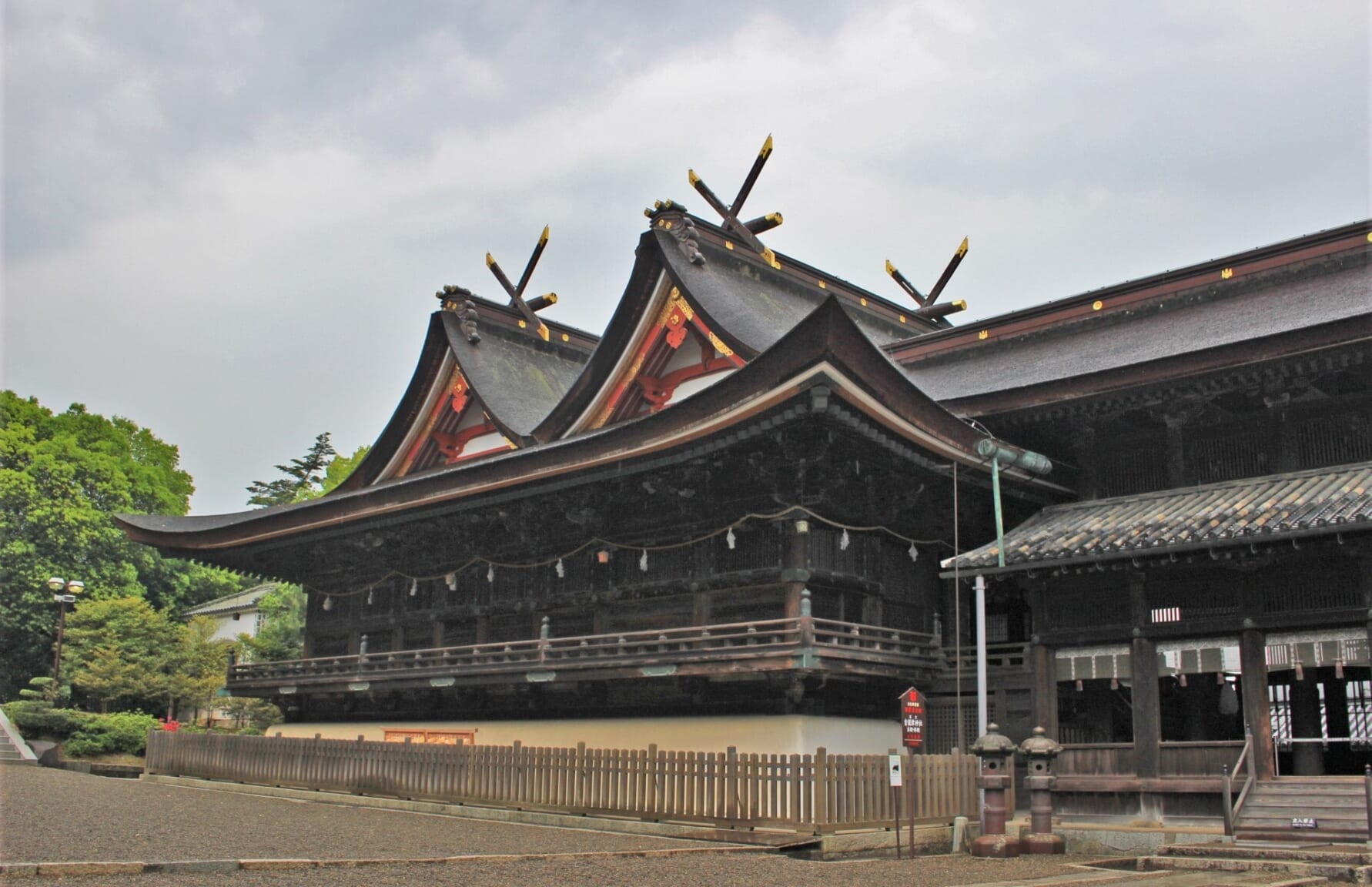
The main hall and worship hall are connected by a 400-meter-long covered corridor, which is a rare architectural feature among Japanese shrines. The shrine is surrounded by lush greenery, creating a serene atmosphere that invites contemplation and reverence. Visitors can also explore the treasure house, which displays a collection of historical artifacts and cultural properties.
 Access Access |
10-min walk from Kibitsu Station |
|---|---|
 Official Website Official Website |
https://www.kibitujinja.com/en/ |
3. Admire the Majestic Okayama Castle on the Asahi River
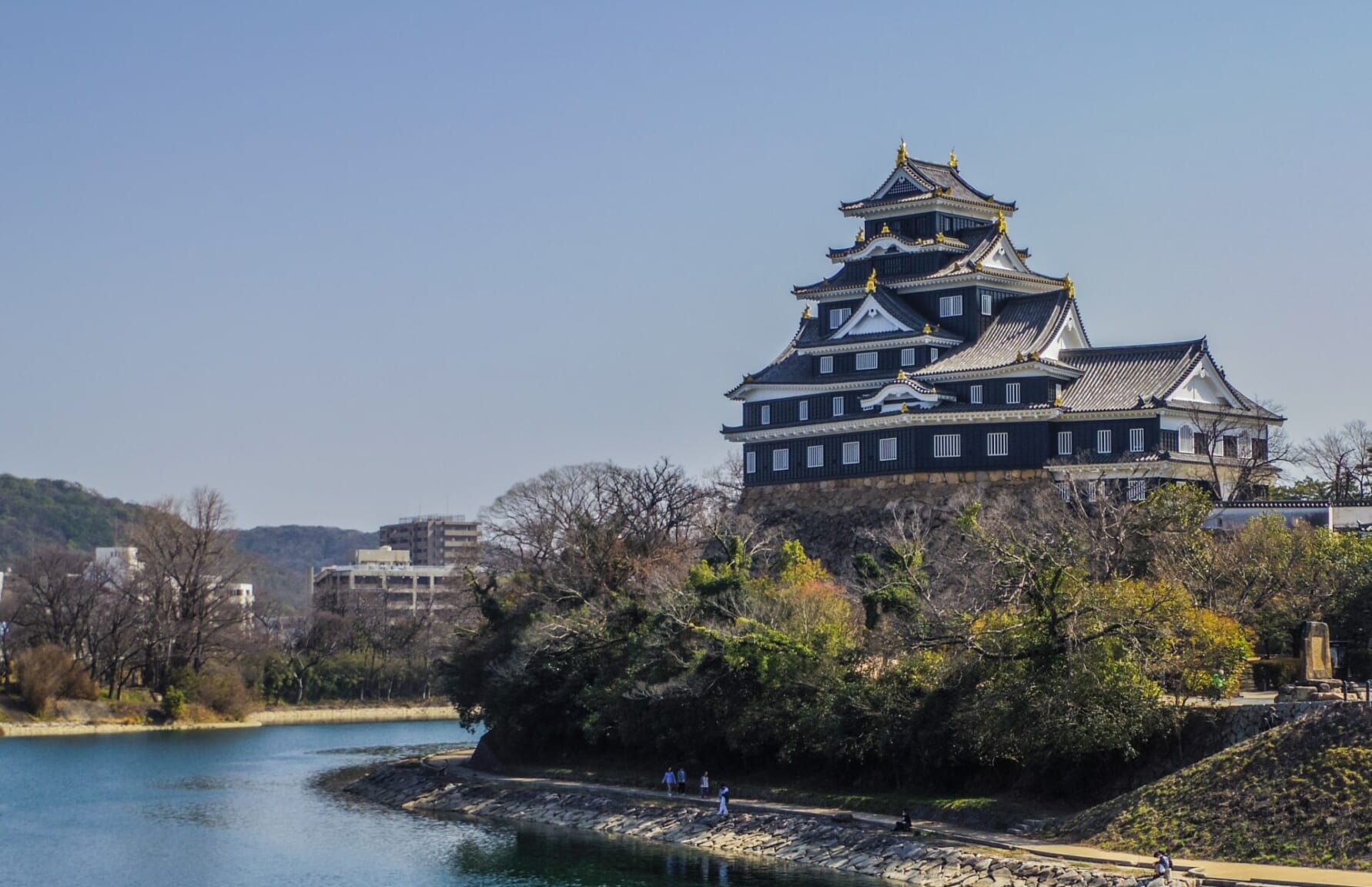
The castle’s unique black color contrasts beautifully with the white of the nearby Korakuen Garden, creating a stunning view that symbolizes the harmony of opposites. Visitors can dress up in traditional samurai or princess costumes and explore the castle, making for a fun and educational experience.
 Access Access |
10-min walk from Shiroshita Station |
|---|---|
 Official Website Official Website |
https://okayama-castle.jp/home-en/ |
4. Discover a Blossoming Paradise in Okayama City at Handayama Botanical Garden
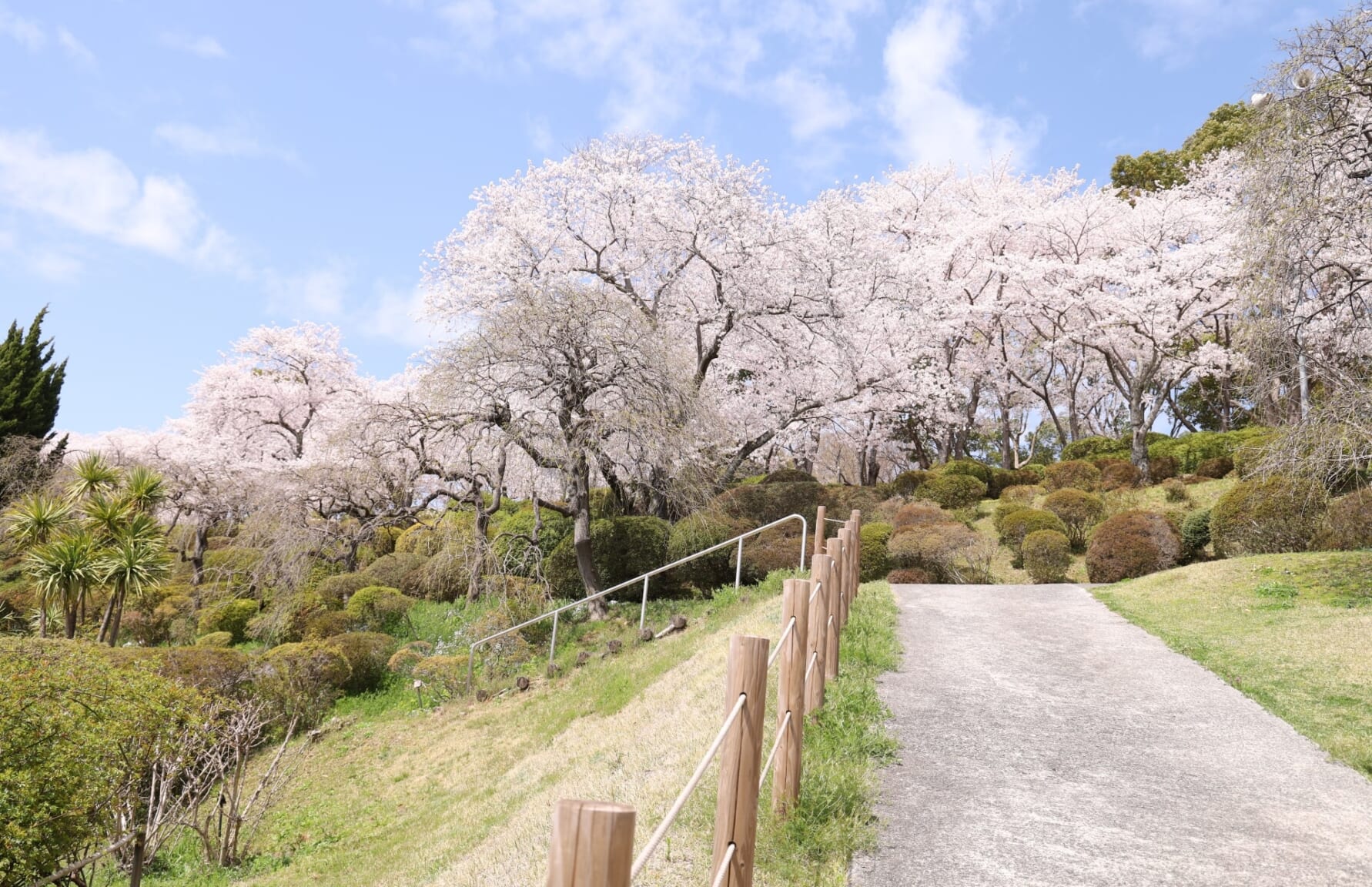
The garden is divided into several sections, each dedicated to a different type of plant or ecosystem, such as the Bamboo Garden, Rose Garden, and Alpine Plant Garden. The garden’s tranquil atmosphere and beautiful scenery make it a perfect spot for nature lovers, photographers, and anyone seeking a peaceful retreat from the city’s hustle and bustle.
 Access Access |
12-min walk from Hōkaiin Station |
|---|---|
 Official Website Official Website |
https://www.okayama-park.or.jp/handayama/ |
5. Become Inspired by a Charming Blend of History, Culture, and Art at Kurashiki
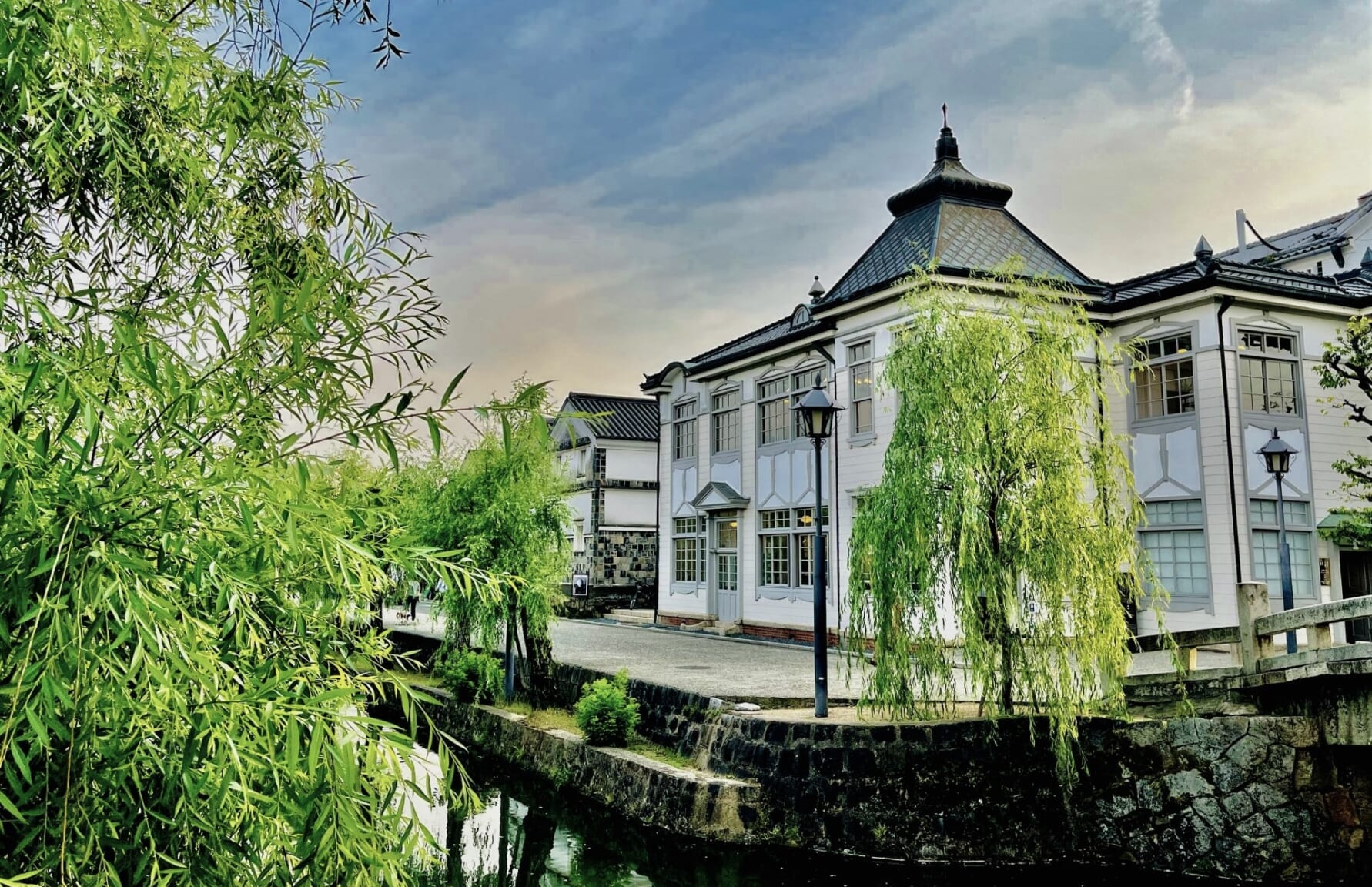
The Ohara Museum of Art, Japan’s first museum of Western art, is a must-visit spot in Kurashiki. The city’s blend of history, culture, and art, along with its picturesque scenery, make Kurashiki a captivating destination for travelers.
 Access Access |
Kurashiki and Kurashikishi Stations |
|---|---|
 Official Website Official Website |
https://www.city.kurashiki.okayama.jp/6219.htm |
6. Discover the Artistic Haven of Inujima Island
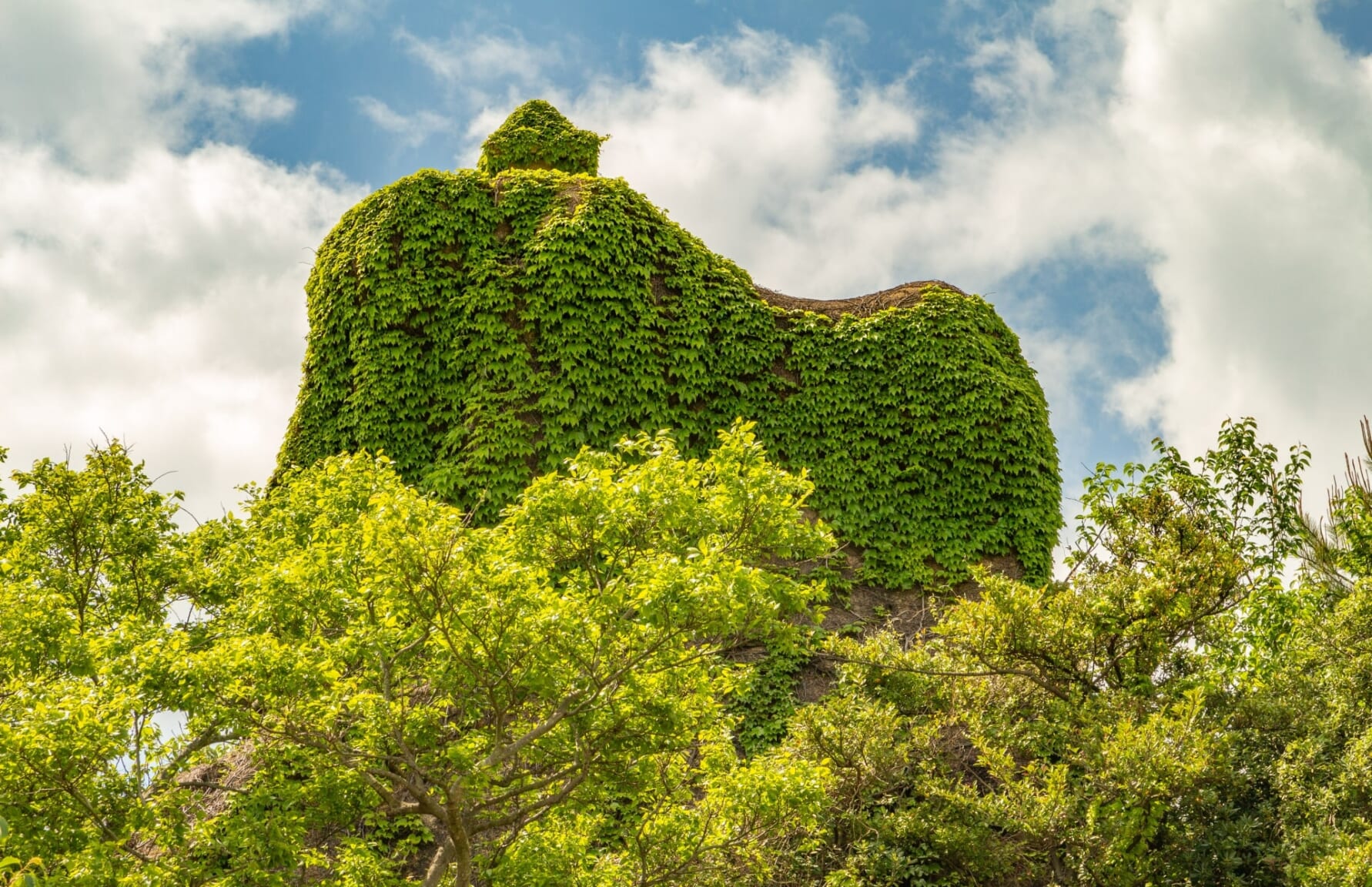
The island is also known for its Inujima Life Garden, a community project that includes a guesthouse, cafe, and gallery. Visitors can explore the island’s quaint alleys, dotted with art installations, and enjoy the tranquil atmosphere. The island is easily accessible by ferry from Hoden Port in Okayama Prefecture, making it a perfect day trip for art enthusiasts and nature lovers alike.
 Access Access |
10 minutes by boat from Hoden Port |
|---|---|
 Official Website Official Website |
https://www.okayama-japan.jp/en/spot/801 |
7. Step Back in Time at Bitchu Matsuyama Castle
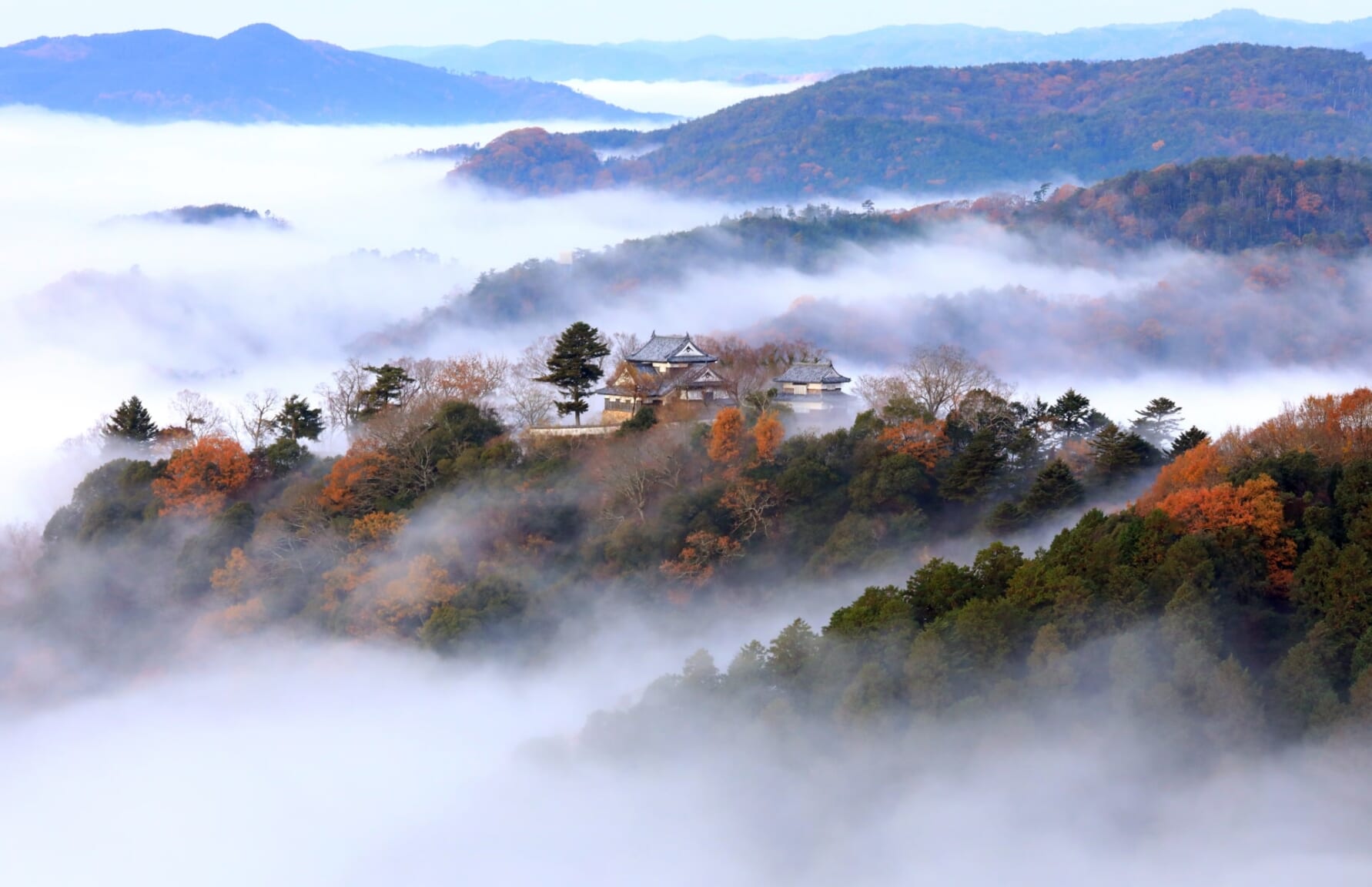
The castle’s main keep, or tenshu, is a three-story structure that offers breathtaking views of the surrounding city and mountains. The castle grounds also feature a secondary enclosure, a residence, and several turrets. The journey to the castle is a bit challenging, involving a steep hike, but the panoramic views from the top are well worth the effort.
 Access Access |
7-min bus and then 45-min walk from Bitchu-Takahashi Station. Or 15-min drive from Bitchu-Takahashi Station until Fuigo-toge Pass Parking Lot, then 20-min walk. |
|---|---|
 Official Website Official Website |
https://www.bitchumatsuyamacastle.jp/ |
8. Rest Your Body and Soul at an Onsen in Okayama
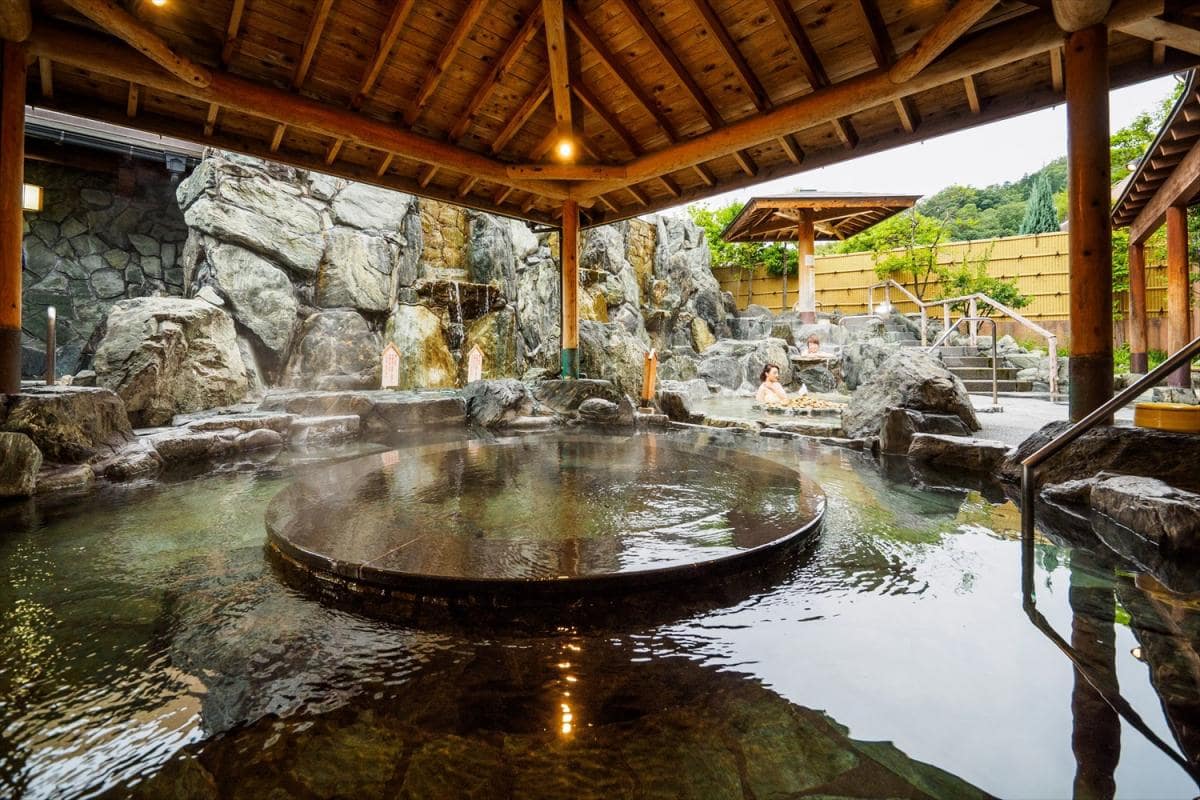
When it comes to relaxation, nothing beats the experience of soaking in a Japanese onsen.
Yunogo Onsen (湯郷温泉), located about 100 minutes from Osaka by express bus, is known as the “hot spring for beautiful skin.” This hot spring town, adorned with the bounties of nature, offers a variety of ryokans (traditional Japanese inns) where you can unwind and rejuvenate. The hot spring is surrounded by cherry blossoms in spring, fireflies in summer, and changing leaves in autumn, making it a picturesque retreat all year round.
On the other hand, Yubara Onsen (湯原温泉) is famous for its Sunayu, a 24-hour outdoor hot spring bath located in the riverbed of the Asahi River. The bath is surrounded by rocks and offers a unique experience of bathing in the heart of nature. The area is filled with accommodations, restaurants, and souvenir shops, making it a perfect place for an overnight stay.
 Access Access |
50-min bus or 30-min drive from Kuse Station |
|---|---|
 Official Website Official Website |
https://www.okayama-japan.jp/en/spot/1085 |
9. The Great Seto Bridge: A Marvel of Engineering and a Gateway to the Inland Sea

The bridge is not just a means of transportation, but also a popular tourist destination. The Seto Ohashi Bridge Memorial Park in Sakaide City, Kagawa Prefecture, offers a panoramic view of the bridge and the Seto Inland Sea. The park also houses the Seto Ohashi Commemorative Museum, where visitors can learn about the history and construction of the bridge.
For those who prefer a more active experience, cycling across the bridge is a popular option. The Shimanami Kaido cycling route, which includes the Great Seto Bridge, is renowned worldwide for its scenic beauty.
 Access Access |
From Kurashiki City on the northern end or from Sakaide City (Kagawa Prefecture) on the southern end |
|---|---|
 Official Website Official Website |
https://www.jb-honshi.co.jp/seto-ohashi/ |
10. Embark on a Side Trip to the Artistic Paradise of Naoshima Island

One of the highlights of Naoshima is the Benesse House, a complex that combines a museum with a hotel, where you can immerse yourself in art, nature, and architecture. Other notable attractions include the Chichu Art Museum, Lee Ufan Museum, and the Art House Project, where abandoned houses throughout the island have been converted into art installations.
A day trip to Naoshima from Okayama is quite feasible. The island is easily accessible by ferry from Uno Port, which is a short train ride from Okayama City. Once on the island, you can explore the art sites by foot, bicycle, or take the local bus. The island’s tranquil atmosphere, combined with its artistic charm, makes it a perfect side trip from Okayama.
Okayama Prefecture is a treasure trove of cultural, historical, and natural attractions. Its unique blend of traditional and contemporary experiences offers a captivating journey for every traveler. So, pack your bags and get ready to explore the diverse and delightful wonders of Okayama.
Check out the attractions you should experience across Japan with this Japan Bucket List! >> 30 Best Things to Do in Japan
▽Check more things to do in other prefectures in Chugoku Region below!▽
▶︎10 Best Things to Do in Tottori
▶︎10 Best Things to Do in Shimane
▶︎10 Best Things to Do in Hiroshima
▶︎10 Best Things to Do in Yamaguchi
For more information about traveling in Japan, check these articles below, too!
Written by
Photographer, journalist, and avid urban cyclist, making sense of Japan since 2017. I was born in Caracas and lived for 14 years in Barcelona before moving to Tokyo. Currently working towards my goal of visiting every prefecture in Japan, I hope to share with readers the everlasting joy of discovery and the neverending urge to keep exploring.





